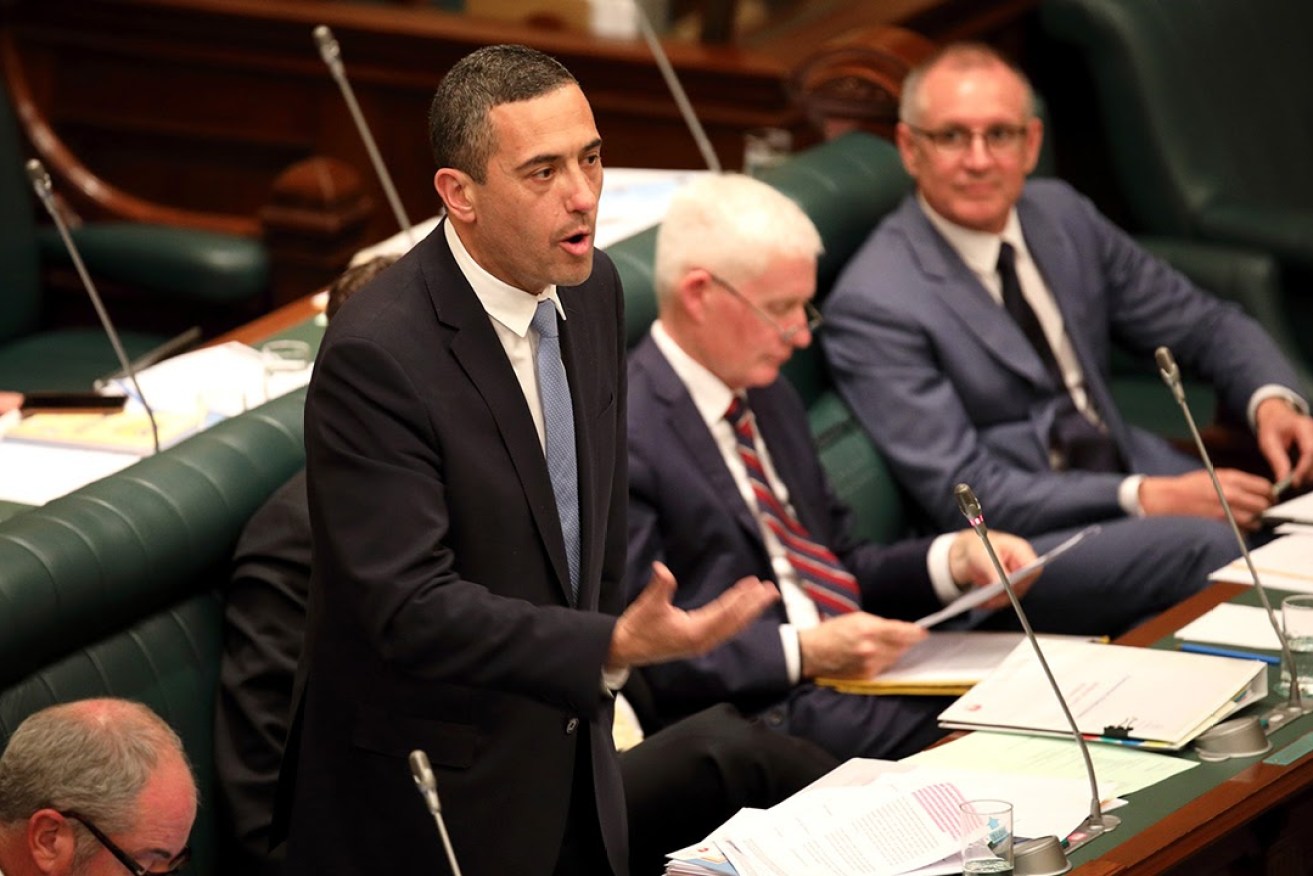SA’s fierce energy debate hits “pointless” note
UPDATED: South Australia’s furious energy debate is striking a note of futility, with a national energy body citing the pointlessness of the State Government’s key argument against saving Port Augusta’s coal-fired power station, and the state Opposition launching a doomed vote of no confidence in Labor.


Energy Minister Tom Koutsantonis says Alinta's offer to hand over its Port Augusta power station would have come with millions of dollars in liabilities. Photo: Tony Lewis/InDaily
With the Northern Power Station demolished and gone forever and the Leigh Creek coal mine closed, the energy debate is now firmly focused on what might have been salvaged – or lost – if the State Government had agreed to power company Alinta’s offer to hand over the facility.
Documents have emerged this week showing Alinta made two offers to the Government: a three-year, $25 million deal, put on the table in May 2015; and a subsequent letter, dated June 2015, which mentions an offer to simply hand over the asset to the Government “on a walk in walk out basis”.
The Government refused both offers, with the struggling power station closing a year later. That event preceded spikes in electricity costs and a number of blackouts, including a statewide shutdown in September 2016.
Premier Jay Weatherill recently flatly denied the Government had received any offer from Alinta, before clarifying that there was no offer that met the Government’s needs.
The Opposition today launched a no confidence motion in the Government which, after Frances Bedford’s resignation from Labor this week, is technically in a minority.
However, the motion was voted down.
“Jay Weatherill’s billion dollar bungle will cost every South Australian household $1000 in increased electricity prices and state taxes,” said Opposition Leader Steven Marshall.
“Every member of the House of Assembly in State Parliament will be required to indicate whether they support Jay Weatherill’s decision to shut down the Northern Power Station and drive up power prices.”
Energy Minister Tom Koutsantonis said Alinta’s offer to hand over the facility would have come with a sting attached.
“No company gives something away for free,” he said in a statement. “This offer came with hundreds of millions of dollars in environmental and other liabilities.
“The same letter documents the hundreds of millions of dollars in losses suffered by Alinta at that stage. The government was not willing to take on those losses.
“The offer also wouldn’t have provided the services we need to secure South Australia’s energy future, which is what we have now delivered with our energy plan.”
On the last point, Weatherill argued yesterday that if the State Government had agreed to keep the Northern Power Station open, it would have precluded room in the market for other moves, such as power company Engie’s announcement this week that it would restore the Pelican Point gas-fired plant to full capacity by 1 July this year.
The chief executive of the body that represents major energy businesses said that while this argument might be true, it is ultimately “pointless”.
Australian Energy Council boss Matthew Warren said it was clear before the Northern Power Station closed that major generators in South Australia were struggling, with Pelican Point down scaling and Torrens Island planning to mothball units.
“We were losing thermal generation, regardless,” he said.
Warren said it had been clear for years that an increase in renewable generation in South Australia was damaging the businesses of fossil fuel generators.
The way forward, he argues, has been given some clarity by the Australian Energy Market Operator (AEMO) report into the statewide blackout, released this week.
The key to stabilising the South Australian grid, with its high level of renewables, was a coordinated national approach.
“This report is not only important for Australia, but for all electricity systems as they seek to decarbonise by using higher levels of intermittent generation,” he said. “They too will be able to draw on the recent experience of the South Australian experiment.
“AEMO’s report highlights the importance of properly coordinated national planning as we transform the electricity system this century. We need both policy and operational reforms to work hand in glove if we are to deliver the decarbonisation of electricity reliably and at the lowest cost.
“The market operator’s work reinforces the need for durable and integrated national climate and energy policy. Without that we will simply continue to play catch up to ensure the operating systems for the grid can handle new technical challenges.”




